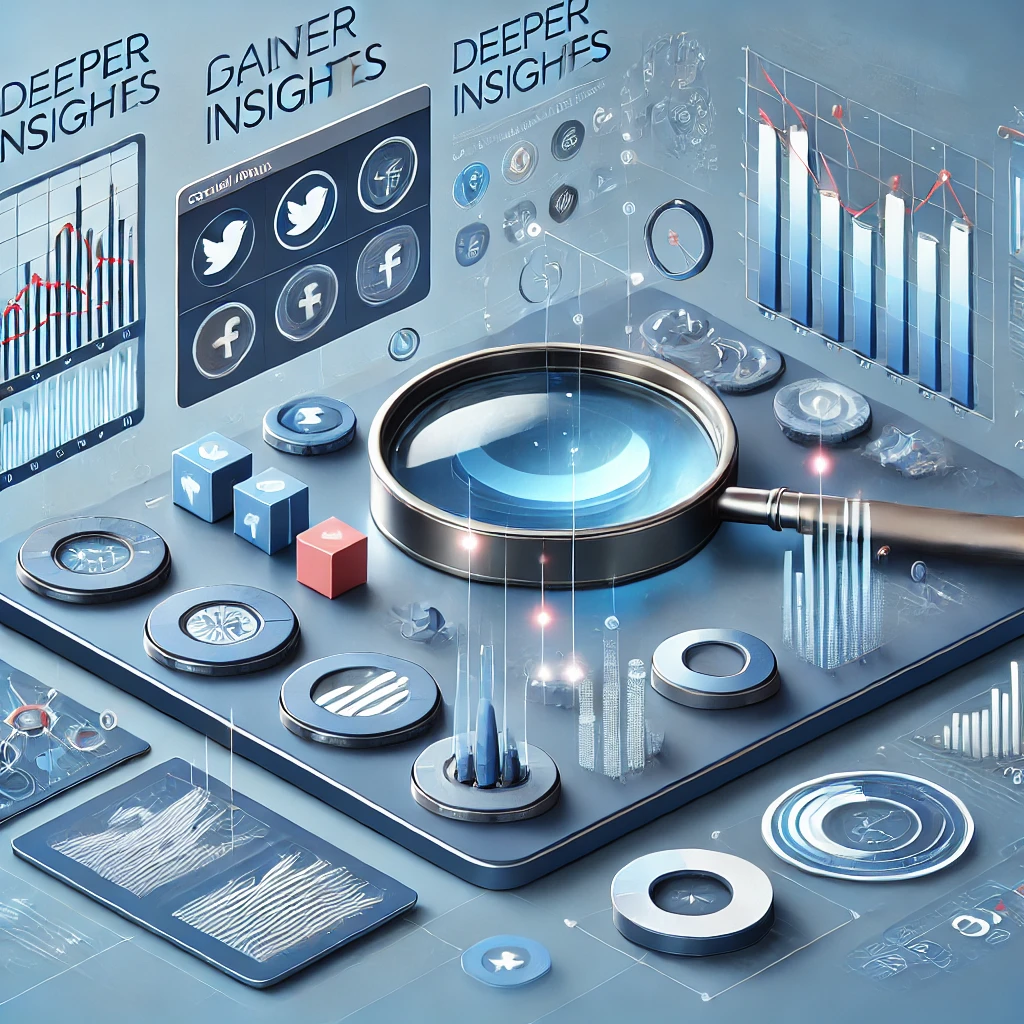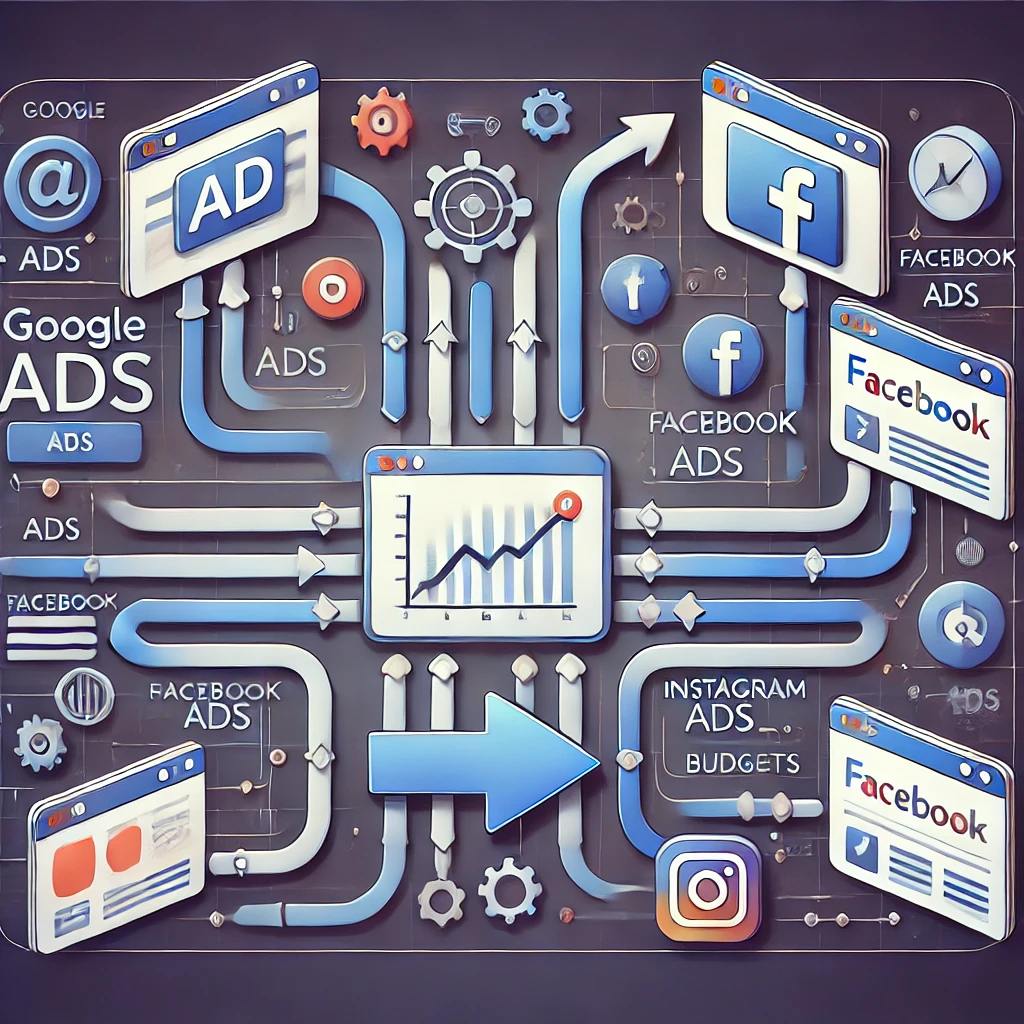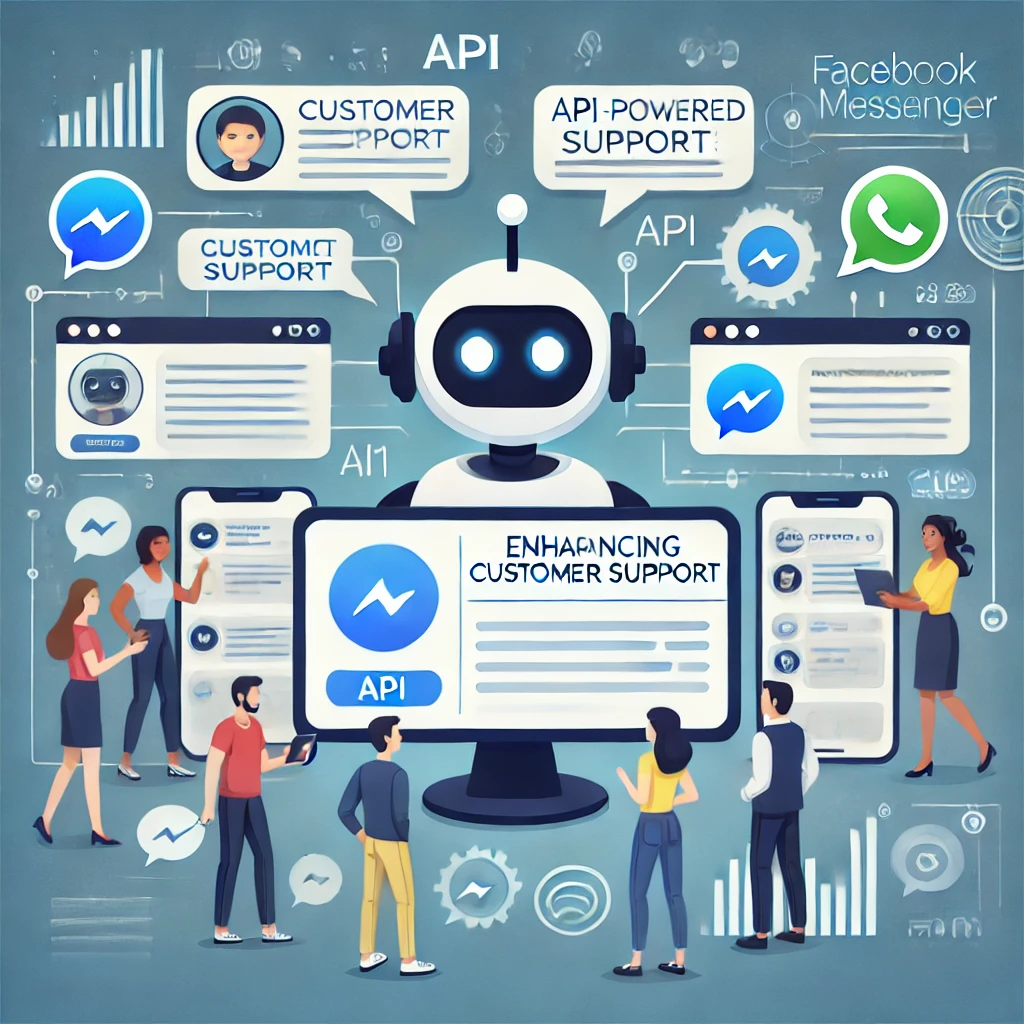Social Media Strategy has become a game-changer for businesses aiming to streamline their efforts and stay ahead of the competition in today’s fast-paced digital landscape. With multiple platforms to manage and an increasing number of tasks to handle, integrating social media APIs (Application Programming Interfaces) into your strategy is a surefire way to simplify workflows, save time, and maximize impact.
We have written multiple blogs about how APIs (Application Programming Interfaces) simplify workflows, save time, and maximize impact. These blogs focus on the practical ways APIs can transform business operations across various functions. Here are the two best posts that delve deep into the benefits of API integration:
7 Powerful Ways to Automate Repetitive Tasks Using APIs for Unmatched Efficiency
In this post, we explore how APIs can take over repetitive tasks that typically consume a lot of time and energy. By automating these tasks, businesses can refocus on what matters most—strategy and innovation. Whether it’s scheduling social media posts, generating reports, or managing inventory, API automation ensures your operations run smoothly and efficiently. Learn how to streamline your daily workflow, reduce human error, and increase productivity with these seven game-changing automation techniques.
10 Powerful Ways to Automate HR Processes with APIs for a More Efficient Workforce
APIs can revolutionize how your HR department operates, from recruitment to employee onboarding and performance management. In this blog, we break down the top ten ways API integrations can optimize HR processes, improving efficiency and enhancing the employee experience. This post is a must-read for HR professionals looking to modernize their workflows, reduce paperwork, and streamline tasks such as payroll processing, leave management, and employee data updates.
We have written multiple blogs about how APIs (Application Programming Interfaces) simplify workflows, save time, and maximize impact. These blogs focus on the practical ways APIs can transform business operations across various functions. Here are the three best posts that delve deep into the benefits of API integration:
1. 7 Powerful Ways to Automate Repetitive Tasks Using APIs for Unmatched Efficiency
In this post, we explore how APIs can take over repetitive tasks that typically consume a lot of time and energy. By automating these tasks, businesses can refocus on what matters most—strategy and innovation. Whether it’s scheduling social media posts, generating reports, or managing inventory, API automation ensures your operations run smoothly and efficiently. Learn how to streamline your daily workflow, reduce human error, and increase productivity with these seven game-changing automation techniques.
2. 10 Powerful Ways to Automate HR Processes with APIs for a More Efficient Workforce
APIs can revolutionize how your HR department operates, from recruitment to employee onboarding and performance management. In this blog, we break down the top ten ways API integrations can optimize HR processes, improving efficiency and enhancing the employee experience. This post is a must-read for HR professionals looking to modernize their workflows, reduce paperwork, and streamline tasks such as payroll processing, leave management, and employee data updates.
These blogs highlight how businesses can harness the power of APIs to achieve operational excellence. Each offers practical insights into how API automation can drastically reduce manual work, allowing teams to focus on more strategic, value-driven tasks.
APIs enable applications to communicate and exchange data, and when applied to social media, they empower marketers to automate tasks, improve efficiency, and optimize their overall strategy. In this post, we’ll explore five key ways to streamline your social media strategy using API integrations, while highlighting the immense value of automating your approach.
Table of Contents
1. Effortlessly Schedule and Post Content Across Platforms
Managing multiple social media accounts manually can quickly become overwhelming, especially when considering the unique characteristics of each platform. As part of an effective social media strategy, platforms like Facebook, Instagram, Twitter, LinkedIn, and others all have different algorithms, ideal posting times, content formats, and audience engagement behaviors. Manually switching between platforms, tailoring content, and posting at the right time is not only time-consuming but also increases the chances of human error.
This is where API integrations come in, offering a smarter, more efficient way to handle these complexities. By integrating social media APIs into your strategy, you can automate the entire process of content scheduling and posting, ensuring that your social media strategy is both consistent and optimized for each platform. Instead of hopping between apps, you can manage everything from one central location, drafting, scheduling, and publishing posts across all your social media accounts.
For instance, tools like Buffer and Hootsuite leverage APIs to streamline the posting process. These platforms allow you to plan and schedule your content for weeks or even months in advance. Whether it’s a Facebook post with a high-resolution image or a Twitter update limited to 280 characters, APIs ensure that your content meets the specific guidelines of each platform. This eliminates the need to manually adjust your posts and allows for a seamless, error-free workflow.
Why This Matters:
API integrations don’t just simplify the task of posting—they optimize it as part of your social media strategy. Each platform has its own content restrictions, whether it’s image dimensions, character limits, or tagging capabilities. By automating through APIs, you ensure that every post meets these requirements effortlessly. Plus, many APIs are updated regularly to stay aligned with platform changes, meaning your automated system adapts without you needing to make manual adjustments.

Practical Tip
Consistency is key when it comes to social media success. Platforms like Instagram and Facebook reward accounts that post regularly with greater visibility, improving your chances of reaching a larger audience. API-powered automation tools make this consistency achievable. By scheduling posts in advance, you maintain an active social media presence even during your busiest times, or when your team is on leave. This approach not only saves time but also ensures your brand remains engaged with its audience, building stronger connections and enhancing brand visibility.
2. Automate Social Media Monitoring and Engagement
Staying on top of your social media channels and engaging with your audience in real time is crucial for building and maintaining brand loyalty. As part of an effective social media strategy, timely replies to comments, direct messages, and mentions can help create a positive impression and strengthen the relationship between your brand and its audience. In today’s fast-paced digital environment, customers expect quick responses, and social media is one of the primary platforms where they interact with brands. However, manually monitoring these interactions can become overwhelming, especially as your business grows and the number of platforms you manage increases.
Every social media platform—be it Instagram, Facebook, Twitter, LinkedIn, or others—requires attention, and with thousands of users commenting, messaging, and mentioning your brand, staying on top of everything manually can easily turn into a full-time job. Without proper tools, this approach can lead to missed opportunities, delayed responses, and a scattered social media presence.
This is where social media API integrations become invaluable. APIs (Application Programming Interfaces) allow your social media management tools to communicate directly with these platforms, automating the collection and organization of interactions across multiple channels. By integrating APIs into your social media strategy, you can automate the tracking and monitoring of comments, messages, mentions, and other interactions in real time, ensuring that nothing slips through the cracks.
Using tools powered by APIs such as Sprout Social or Brand24, you can automate the tracking of brand mentions, hashtags, and comments across platforms. These tools use APIs to aggregate data from multiple sources, providing real-time insights and notifications directly to your dashboard. This way, you can respond quickly to customer inquiries, address complaints, or thank users for positive mentions without constantly checking each platform.

Practical Tip
Setting up automated responses for common questions or comments through API-powered chatbots is a highly effective component of any social media strategy for managing routine inquiries on social media. Chatbots, integrated via APIs, can handle repetitive tasks such as answering frequently asked questions, providing quick responses to customer queries, and even guiding users through common issues. This type of automation ensures that your audience receives instant replies, improving user satisfaction and engagement.
3. Gain Deeper Insights with Automated Analytics
Tracking your social media performance is vital to understanding what works and what doesn’t. Manually pulling data from each platform can be a labor-intensive process, but APIs make it easier to collect and analyze this data automatically.
With the help of tools like Google Analytics or Cyfe, which use social media API integrations, you can automatically track metrics such as follower growth, engagement rates, click-through rates, and more. This data helps you make informed decisions about where to invest your resources for maximum impact.
Furthermore, APIs allow you to generate custom reports that focus on the metrics that matter most to your business. Whether it’s understanding which type of content performs best on Instagram or tracking conversion rates from Facebook ads, APIs ensure that the data is at your fingertips in real-time.

Practical Tip
Use API integrations as part of your social media strategy to create automated reports that are delivered straight to your inbox at regular intervals. This ensures you stay on top of your performance metrics without having to dig through each platform individually.
4. Streamline Paid Advertising Campaigns
Managing paid ad campaigns across multiple platforms can be time-consuming and complex. From setting up campaigns to tracking results and optimizing performance, there’s a lot to handle. API integrations simplify the process by allowing you to manage everything from one interface.
Platforms like Facebook Ads Manager or Google Ads use APIs to provide access to data and performance metrics in real-time. By integrating these APIs into your workflow, you can automate ad placement, budget adjustments, and A/B testing across various platforms.
For example, if one of your Instagram ads is performing exceptionally well, an API can automatically adjust your ad budget to allocate more funds toward that specific campaign. By doing this, your social media strategy benefits from real-time optimizations without requiring manual oversight. This level of automation ensures that you’re maximizing the effectiveness of your advertising dollars, allowing your most successful ads to reach a wider audience, all while minimizing manual intervention and increasing overall efficiency.

Practical Tip
Using API-powered tools to automate ad spend optimization is a highly effective strategy for ensuring that your advertising budget is utilized efficiently without the need for constant manual monitoring. When managing multiple campaigns across platforms like Google Ads, Facebook Ads, or Instagram, it can be time-consuming to track performance, adjust bids, and allocate budget based on real-time data. This is where API integrations come into play, allowing for seamless automation of these processes.
5. Enhance Customer Support Through API-Powered Chatbots
In today’s customer-centric world, providing immediate and effective support on social media is critical. API integrations allow you to implement chatbots that can handle a large volume of customer inquiries, reducing the workload on your customer support team.
Using APIs as part of your social media strategy, chatbots can seamlessly interact with users on platforms like Facebook Messenger, Twitter, and Instagram. These bots can answer common questions, provide personalized product recommendations, and resolve basic issues in real-time. For example, when users inquire about a product’s availability or shipping details, the chatbot can instantly pull this information from your database using an API integration.
Beyond this, chatbots can also be connected to your CRM or support ticket system. This integration ensures that every customer interaction is logged and tracked, allowing for more complex issues to be escalated to human agents when necessary. This level of automation in your social media strategy helps provide timely customer service, enhance user satisfaction, and ensure a seamless transition between automated and human support.
Furthermore, by leveraging these tools, businesses can efficiently handle high volumes of inquiries without compromising the quality of engagement. This creates a more responsive and customer-centric social media presence, improving both operational efficiency and customer loyalty.

Practical Tip
Leveraging AI-powered chatbots using social media APIs is a highly effective way to provide 24/7 customer support, ensuring your users always receive timely assistance, even when your team isn’t available. In today’s fast-paced digital world, customers expect instant responses, whether they are browsing your website in the middle of the day or need help late at night. AI chatbots, integrated with social media platforms via APIs, allow you to meet these expectations while maintaining a high level of service.
How API Integration Transforms Your Social Media Strategy
Social media API integrations are essential for any business looking to streamline its social media strategy. By automating tasks like content scheduling, engagement tracking, analytics reporting, and customer support, you free up valuable time and resources to focus on more strategic activities. With the power of API-driven automation, you can maximize your social media efforts, reach more people, and ultimately, drive better results.
To get started with integrating automation into your social media strategy, evaluate the tools and platforms you currently use, identify which API integrations are available, and explore how they can fit into your existing workflow. The future of social media is automation, and by embracing API integrations as part of your overall social media strategy, you can streamline operations, improve engagement, and position your business for long-term success i
For businesses looking to stay ahead in the digital world, optimizing your social media strategy is essential. The tools and techniques you use can have a significant impact on how you engage with your audience, track performance, and ultimately, grow your brand. To help you fine-tune your approach, here are a few valuable resources:
How to Use Google Analytics for Social Media Tracking
Google Analytics is a powerful tool for tracking and analyzing your social media performance. It goes beyond just counting likes and comments, allowing you to measure the actual value your social media efforts bring to your business. With Google Analytics, you can track how much traffic social media channels are driving to your website, measure conversions from different platforms, and understand user behavior once they reach your site. Learning how to use these insights will enable you to optimize your strategy, identifying which platforms and content types are driving the most engagement and delivering the best results.
Best Practices for Social Media Automation
The Future of AI in Social Media Marketing
By leveraging the right tools and automation strategies within your social media strategy, you can significantly enhance your social media presence and create lasting connections with your audience. Incorporating automation through API integrations allows you to manage tasks such as scheduling posts, engaging with followers, and monitoring performance across multiple platforms. This streamlining of your social media strategy not only saves time but also ensures that your brand is consistently visible, responsive, and aligned with audience expectations.
Moreover, automation tools enable real-time adjustments to campaigns and seamless user interactions through chatbots or automated replies, further deepening your engagement. By focusing on efficiency and personalization, you can cultivate meaningful relationships with your audience, leading to increased loyalty and long-term success.
